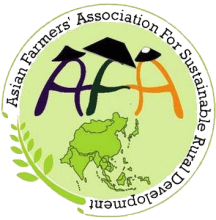As opposed to agribusiness or corporate farming, FAO defined family farming as “a means of organizing agricultural, forestry, fisheries, pastoral and aquaculture production which is managed and operated by a family, both female and male. The family and the farm are linked, co-evolve and combine economic, environmental, reproductive, social and cultural functions. A family farm is an agricultural landholding which is managed and operated by a household and where farm labor is largely supplied by that household.”(FAO, 2013) In the context of most Asian countries, family farmers are smallholders, small scale food producers - farmers, fishers, pastoralists and herders and gatherers of forest resources.
In Asia and the Pacific, family farms dominate the landscape. It is home to 60 % of the world’s population and to 70% of the world’s family farmers. About 40% and 90% of farmers in each country in Asia and Pacific are small scale food producers, farmers, fishers and herders. Family farmers produce 80 % of the total food needed to ensure food security of the region (RAP report, 2013).
The higher productivity of family farms are normally due to higher use of labor and other family-owned inputs, and a generally higher index of cropping intensity and diversification even with smaller capital. Experience has shown that Asian countries such as India that promoted small family farms were able to launch the Green Revolution. Countries like China started supporting smallholder farming after collective farms could not provide adequate incentives to increase production and productivity. The inverse relationship between farms size and productivity is a powerful rationale for land reform policies, including land redistribution for both efficiency and equity gains.
However, family farmers are faced with many challenges that threaten their very existence worldwide. The profitability and over-all viability of agriculture, forestry and fisheries production has always been subject to the vagaries of weather, social, political, technical, and economic factors, but the years of non-prioritization of the sector led to it being more vulnerable when the 2008 worldwide food, financial and energy crisis happened. The persistence of hunger and malnutrition in Asia, especially among family farmers, is largely due to the fact that poverty is basically a rural problem in the region.(Balakrishnan, 2013)


